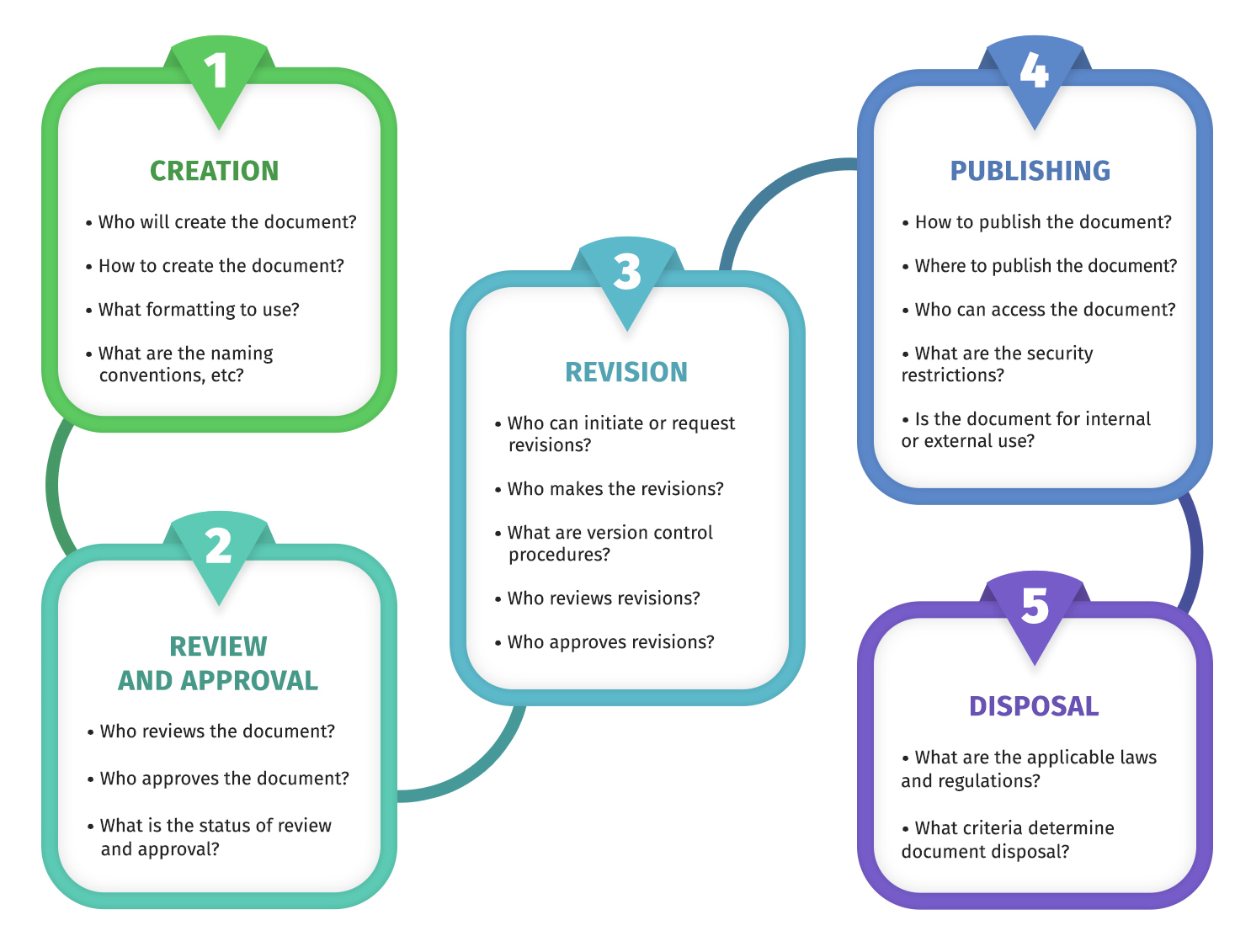Document control numbering is the use of a system for document numbering that allows you to create, store and then access documents in an organized manner.
If you want to learn via video, then watch below. Otherwise, skip ahead.
A Simple Document Numbering System
The simplest form of a document numbering system is the file and folder names that we use on a daily basis. The file name helps us remember the file’s purpose and the type of data it contains. We use folders to group files of the same kind.
For example, if you manage your monthly household budget using spreadsheet software such as Excel, you might assign a document name that includes the month’s name. For a particular calendar or financial year, you may store all the monthly budget files in a single folder named for that year. In this way, you always know where you store your monthly budgets and can easily access them whenever you need them.
Before we get into further detail about document numbering systems, let’s first discuss what document control is and why it is required.
What is Document Control?
Document control professionals ensure that teams follow approved document management standards for creating, reviewing, modifying, issuing, distributing, and accessing documents.
Document control is a key component of organizational risk management. These procedures ensure that the information contained in organizational documents is accurate and up-to-date, is updated regularly, and that the proper document control process for updates is followed.
Document control procedures also ensure that inaccurate or obsolete documents are removed.
Why is Document Control Required?
Organizations cannot function without standards-based document control.
The purpose of document control is to ensure that users trust the documentation. Document control ensures that organizational documents are:
- Created after going through the proper review and approval process.
- Distributed to authorized personnel only.
- Accessible.
- Accurate and up-to-date.
Document control also creates auditable records of document creation, modification, and exchange.

How Does Document Control Numbering Assist with Document Control?
Each organization consists of several departments. Each department has multiple employees who work on various projects and tasks. Organizations create, review, approve, distribute, store, and access hundreds of documents every day.
If a document numbering system is in place, departments and employees know how to name documents for different purposes, projects, and tasks, how to store them, and how to access them. And this applies not only to unique papers but also to updated versions of the same document type.
What is Version Control?
Organizations use version control to manage multiple versions of the same document, keeping a record of how they created and changed the document over time.
Each time you revise the document, you assign a revision number to identify the latest version and distinguish between drafts and final, approved versions.
Version control is helpful in a collaborative environment, where multiple contributors may be working on a document, and it is essential to track changes, capture key decisions, and document the review process.
Organizations often apply version control to key documents such as policies, procedures, and strategic plans to ensure they know which version is currently in force or was in force at a particular point in time.
A Sample Document Control Numbering System
To consider what a document numbering system would look like, let’s take the case of a company with eight departments: HR, Finance, Accounts, Engineering, Administration, IT, Sales, and Marketing.
The first part of the document number indicates the company and may be an abbreviation of the company name, such as APL for Apple.
Most companies are operating across multiple locations. The second part of the document number could be an abbreviation for the area, such as NYC for New York City.
The third part of the document number could indicate the department or division, for example, HR for the Human Resources department, IT for the Information Technology department, and so on.
The fourth part of the document number could indicate the type of document; for example, SOP for the standard operating procedure or POL for policy.
The fifth part of the document number could indicate the process level, for example, AP for accounts payable or AR for accounts receivable.
The sixth part of the document number could indicate the procedure level, serving as a sequential number for each procedure.
The final part of the document number could indicate the document version and use a revision number, such as V1 for the first version, V2 for the second version, and so on.
How to Set Up Document Control Numbering?

Follow these steps to set up document control numbering.
Identify Your Requirements
The most important thing to consider when setting up a document control numbering system is your requirements. The system you use can be complex or simple, but it must satisfy your organizational requirements.
Develop a Document Control Numbering System
Once you have identified all your requirements, the next step is to develop a system or structure for document control numbering. The structure could be similar to the sample numbering system discussed above, or it could be different. Again, your departmental and organizational requirements determine the document properties, which in turn define the document numbers.
Test the Document Control Numbering System
In the beginning, every system goes through a few hiccups as people learn how to use it. A few unexpected issues can also arise.
It could even happen that an employee, who knows the details much better than people working higher up, might propose a better structure for document control numbers.
One of the benefits of the test phase is that you learn what works, what doesn’t, and what changes you need to make to help the system function smoothly in the long term.
Implement the Document Control System
Based on the observations and feedback received during the test phase, you can make the required changes and update the system to incorporate them.
Document control numbers are one aspect of the overall document management system or the document control system that you would deploy for your organization. Other elements of document management include processes and procedures for document creation, storage, access, distribution, and update.
Electronic Document Management System
Most organizations today use electronic document management systems (EDMS). Setting up the document control system would include selecting an EDMS and then configuring it to use the document control numbers that you have developed.
Training
Once the systems are set up, your staff across all departments need to know and understand the document management systems before they can use them. Your training strategy could include an initial training session and a few refresher sessions as needed.
You can also include the essentials of your document control strategy in the employee handbooks provided to every employee. This would enable employees to refer to handbooks and obtain the required information whenever needed.
Review and Update the Document Control System
Learning is an ongoing process. With time, you’ll develop new requirements, making other significant changes necessary. You will need to update the document management system, including the numbering systems, when new needs and requirements arise.
If you want to master new technical writing skills, consider some of our leading courses.
Best Practices for Document Control Numbering
These are the best practices for document control numbering.
Align with Organizational Requirements
The document numbering system should align with your organization’s needs and operating practices.
Take a Holistic View
You should view document control numbers as one aspect of a holistic document strategy and develop, design, implement, review, and update them in accordance with the overall document control strategy.
Conclusion
Document control numbering is a tool that helps you manage documents. It is one component of a holistic document management system that helps you create and review documents in accordance with approved procedures and standards.
If you are new to document control management and are looking to learn more, we recommend taking our Technical Writing Certification Course, where you will learn the fundamentals of managing technical documentation.





















